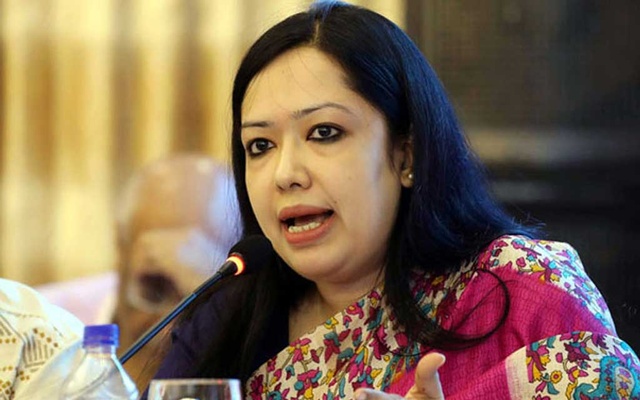1. From Empires to Reigns: An Introduction to Leadership Evolution and Power Transformation
The trajectory of leadership across history reveals a fascinating pattern of transformation—from vast, centralized empires to more localized, individual reigns. This evolution reflects not only changes in governance structures but also shifts in how power is perceived, exercised, and transferred. The concept of leadership shifts is fundamental to understanding the ebb and flow of political stability and upheaval, providing insight into how societies adapt to internal and external pressures.
Historically, the transition from imperial dominance to monarchic or even republican systems signified a move away from absolute central authority towards a more segmented or personalized form of governance. These shifts often marked moments of crisis or opportunity, where new leadership paradigms emerged to address the complexities of expanding or contracting empires. Recognizing these patterns helps us connect past leadership transitions to today’s political landscape, where change remains constant and often unpredictable.
Table of Contents
- Historical Foundations of Leadership Transitions
- Mechanisms of Leadership Shifts: Methods and Triggers
- The Role of Personalities and Legacies in Shaping Power Dynamics
- Consequences of Leadership Change on Power Structures
- Comparative Analysis: Medieval vs. Modern Leadership Transitions
- Deepening the Understanding: Psychological and Cultural Underpinnings
- Bridging Past Lessons to Modern Power Dynamics
- Returning to the Parent Theme: The Fall of Power Revisited
2. Historical Foundations of Leadership Transitions
Throughout history, the collapse of imperial systems and the rise of new governance models have been driven by complex factors. A quintessential example is the fall of the Western Roman Empire in the 5th century, which led to fragmented regional powers and the emergence of feudal monarchies across Europe. Similarly, the decline of the Han Dynasty in China created a power vacuum that facilitated the rise of regional warlords and subsequent dynastic changes.
Case studies such as the transition from the Ottoman Empire’s centralized authority to the modern Turkish republic illustrate how internal crises and external pressures catalyzed leadership restructuring. In medieval Europe, succession crises—like the Wars of the Roses—demonstrate how internal conflicts over leadership legitimacy can reshape the entire political landscape. Modern examples, including the fall of the Soviet Union, show how ideological shifts and economic crises can precipitate systemic change.
These historical lessons affirm that leadership transitions often stem from a combination of internal weaknesses and external challenges, underscoring the importance of adaptive governance to prevent or manage collapse. For a comprehensive understanding of these processes, exploring detailed case studies reveals patterns that recur across different contexts and eras.
3. Mechanisms of Leadership Shifts: Methods and Triggers
Political upheavals: coups, revolutions, and diplomatic shifts
Political upheavals serve as immediate catalysts for leadership change. Coups d’état, such as the 1973 Chilean coup that ousted President Salvador Allende, exemplify sudden, forceful transitions often driven by military factions or political factions dissatisfied with current leadership. Revolutions, like the French Revolution of 1789, fundamentally reconfigure power structures, dismantling old regimes and establishing new authority based on revolutionary ideals.
Cultural and societal influences on leadership transitions
Societal values, religious beliefs, and cultural narratives deeply influence leadership legitimacy and the acceptance of new rulers. The Meiji Restoration in Japan (1868) exemplifies how cultural shifts—embracing modernization while retaining tradition—can enable leadership to legitimize reforms and solidify authority. Societal expectations often determine whether a leader’s rise or fall is accepted or contested.
External pressures: wars, economic crises, and technological advancements
External factors frequently accelerate leadership shifts. World Wars, such as WWII, led to the fall of monarchies like Germany’s Kaiser Wilhelm II and the abdication of Tsar Nicholas II of Russia. Economic crises, like the Great Depression, destabilized regimes and facilitated radical changes in leadership. Technological innovations—such as the printing press or social media—also transform how leadership is perceived, contested, and consolidated.
4. The Role of Personalities and Legacies in Shaping Power Dynamics
Charismatic leaders like Napoleon Bonaparte exemplify how individual personalities can temporarily stabilize or upheave existing power structures. Napoleon’s charisma allowed him to rise rapidly from revolutionary France to emperor, reshaping European borders and governance models.
Leadership legacies—such as Gandhi’s nonviolent resistance—continue to influence future generations and shape political ideologies long after their founders’ deaths. These legacies often dictate how subsequent leaders are perceived and how power is exercised or contested.
Non-obvious factors, including influential advisors, political marriages, and courtly networks, also play critical roles. For example, Catherine the Great’s ascent was facilitated by strategic marriages and court alliances, demonstrating that leadership dynamics often hinge on subtle but powerful social and political relationships.
5. Consequences of Leadership Change on Power Structures
Leadership shifts often result in a redistribution of authority and resources. The transition from the Roman Republic to the Roman Empire centralized power in the hands of emperors, transforming the political and economic landscape of the Mediterranean basin.
New elites and factions emerge as old regimes fall. For instance, after the fall of the Qing Dynasty, revolutionary factions and warlords vied for control, leading to decades of civil conflict before establishing a new government.
Long-term stability or instability depends on how seamlessly these transitions are managed. Smooth successions—like the peaceful transfer of power in constitutional monarchies—contrast with violent upheavals that can fragment states or usher in prolonged chaos.
6. Comparative Analysis: Medieval vs. Modern Leadership Transitions
| Aspect | Medieval Transitions | Modern Transitions |
|---|---|---|
| Mechanisms | Hereditary succession, warfare, feudal allegiances | Constitutional laws, elections, political negotiations |
| Outcomes | Decentralized authority, frequent conflicts | Centralized or democratic governance, stability or upheaval |
| Communication | Limited, slow, reliant on couriers | Instant, global via digital media |
Despite differences, both periods show that leadership shifts are often unpredictable and influenced by multiple factors. The advent of technology, especially, has drastically altered how transitions occur and are perceived, making modern leadership changes potentially more rapid but also more complex.
7. Deepening the Understanding: Psychological and Cultural Underpinnings
Leadership transitions are deeply rooted in collective identity and societal loyalty. During upheavals, public sentiment can sway dramatically—fear of losing security or hope for a better future—shaping the acceptance or rejection of new leaders. Propaganda, whether in medieval sermons or modern social media campaigns, plays a crucial role in molding perceptions and maintaining or undermining authority.
Cultural narratives influence how leadership changes are interpreted. In some societies, ancestral worship and continuity ideals foster stability, while others value innovation and individual heroism. These societal values affect how transitions unfold and their subsequent legacies.
“Understanding the societal and cultural fabric during leadership shifts reveals the unseen forces that determine whether a transition leads to stability or chaos.”
8. Bridging Past Lessons to Modern Power Dynamics
Historical patterns of leadership change offer vital lessons for contemporary politics. Recognizing signs of impending shifts—such as rising social unrest, economic downturns, or shifts in public discourse—can help anticipate transitions. For example, the Arab Spring demonstrated how social media could accelerate political upheaval, echoing historical instances where communication channels influenced the speed and nature of leadership change.
Furthermore, understanding the mechanisms behind past transitions informs strategies to manage or prepare for leadership changes today. Whether through institutional reforms or societal engagement, lessons from history underscore the importance of adaptability and resilience.
For a deeper exploration of how these lessons apply across eras, see The Fall of Power: Lessons from Medieval and Modern Games.
9. Returning to the Parent Theme: The Fall of Power Revisited
Drawing from our examination of leadership shifts, parallels with the decline of great empires become evident. Just as medieval kingdoms experienced gradual erosion of authority through internal strife, external invasions, and shifting cultural values, modern powers also face complex, often rapid, decline triggered by systemic failures or external shocks.
Understanding leadership evolution enhances our insights into past collapses, illustrating that power is inherently dynamic and susceptible to transformation. Recognizing signs of decline—be it declining legitimacy, loss of societal cohesion, or external pressures—can inform strategies to either prevent downfall or manage transitions more smoothly.
In essence, the study of leadership shifts serves as a bridge between past and present, revealing patterns that are crucial for navigating the inevitable ebb and flow of power. By integrating these lessons, we gain a more nuanced perspective on how societies rise, fall, and reinvent themselves across history.







